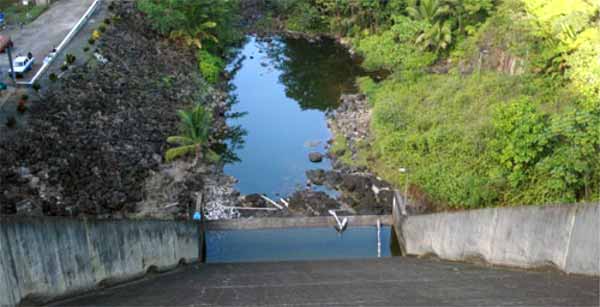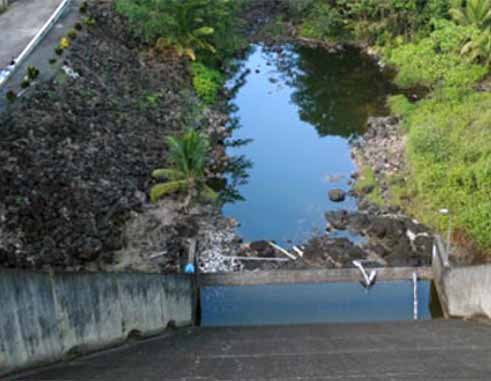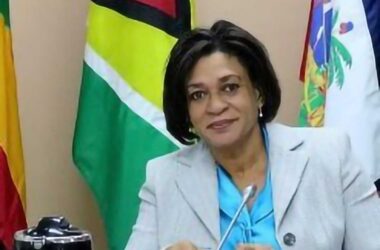

WITH WASCO’s announcement of the closure of the John Compton Dam and the resultant water shortage on Wednesday and Thursday, I pondered as to how we have reached this stage. Since 1994 after the passage of Tropical Storm Debbie, there were concerns on the siltation of the dam, some 20 years later we are still speaking about desilting. In my search to find this elusive truth, I decided to research the last 19 budget speeches from 1997 to 2015, an onerous task indeed, but the thirst for the truth kept me going. Part 1 looks at the first nine years.
The journey started on November 4, 1997 in the Supplementary Budget Address where the following was stated by the Minister of Finance:
“Having reviewed the situation, Government has decided to transform WASA into a corporate entity to enable it to become an effective self-financing business.. A new company will be registered under the Companies Act, to take over the assets and management of WASA by January 31, 1998. New contract management structures and mechanisms will be put in place, especially during the transition stage between statutory status and corporatization.
“Mr. Speaker, irrespective of the status of WASA, the level and system of tariffs must be adjusted. However, this Government accepts that tariff adjustments can only be justified with improvements in the quality of service provided.
“All changes breed anxieties. Government recognizes that the transformation of WASA will require the understanding and support of the public and the unions representing the employees. Government will immediately enter into dialogue with the unions concerned to ensure smooth labour relations during the vitally necessary but sensitive transitional management phase.’’
It was the intent in 1997, that this new company to be formed by January 31 1998 would become an effective self-financing business. There was a commitment that the management structure to create such an entity would be put in place. In that same Budget Address it was announced that a $ 3.2 million annual subvention would be discontinued by the end of the year.
On April 21, 1998, the details of the changes at the then WASA were further revealed in the Budget Address, the following is the statement by the Minister of Finance:
“As a result of the existing insolvency of WASA and the burden on the resources of the state, the government has decided to pursue the following:
1. Establish a new Corporate Entity initially owned by Government, operating along best business practices and providing quality services to the consuming public.
2. Create by statute, an independent regulatory agency to guarantee the safety and integrity of our water resources and supply, and to ensure standards are maintained in the water sector.
3. Ensure that the new corporate entity has a stronger engineering capability to include better capital works planning, asset management, water harnessing, and water treatment and quality control.
4. Emphasize consumer satisfaction with concerted attention paid to a consistent water supply, correction of faults and complaints and to shorten the lead time on new connections.
5. Improved financial management to take into account the resources of the company, the reduction in wastage, review of manpower levels and the effective maintenance of assets.
6. Enhancement of revenue base to ensure viability, capital works improvement and quality service delivering.
7. Motivated workforce capable of delivering quality service and safeguarding the assets of the new company.
“Mr. Speaker, the situation at WASA in one simple word is “bleak”. This Government cannot allow the situation to persist since our water resources are the centre of our existence. Without a consistent water supply, our health and our economy will be in jeopardy.
“In establishing the new corporate entity, Government will allow the company to operate along private sector lines with a Board made up of successful entrepreneurs and a minority of Government officials. The new company will have as its main objective, the satisfaction of the consuming public. It will be mandated to ensure efficient and courteous service, backed by a consistent water supply.
The need to provide and ensure that the engineering capacity is available to the new company is central to the production of our water supply and the protection of our water resources. The new company must be allowed to recruit the best human resources available in the engineering field.
“The financial resources of the new company will be managed along strict commercial lines, which will be reflected in an improved service delivery.
“The revenue base of the new company will be enhanced through the introduction of adequate tariff for the services provided. Our records reveal that water rates have not been increased for the past 10 years and that WASA has been subsidizing water to the consuming public. Once the institutional arrangements are in place, we can expect water rates to be increased. However, I want to ensure fellow St Lucians that these increases will result in a consistent supply of water to your homes and business places.
“Further pronouncements will be made on these matters as the process crystallizes and discussions are finalized with the unions.”
WASCO is thus in the birthing process and of note is the statement that the situation at WASCO is ‘’bleak”. The intentions are sound, the hopes of this new entity are high, and will WASCO ‘ensure efficient and courteous service, backed by a consistent water supply’
In the Budget Address of the Financial Year 1999-2000, the government it would appear, felt so confident that this newly created entity called WASCO will be so efficiently run, that they demanded their pound of flesh of $ 40 million of previous advances. It was a strange decision given that just months before the financial situation at WASCO was deemed bleak. How could a new company struggling to pay its bills, having severe cash flow problems, be able to sustain the repayment of a loan of $ 40 million. The following is the statement made by the Minister of Finance:
“The re-structuring of WASA involves an invest-ment of $40 million at 9.8% interest, by the Royal Merchant Bank and Finance Company of Trinidad and Tobago, part of which will be used to meet WASA’s indebtedness to Government. The Government has agreed to meet the interest and transaction costs of just under $4.0 million for the first year only, after which a re-structured WASA/WASCO will have to make appropriate arrangements to service all its liabilities. These arrangements will be determined during the re-structuring exercise in which the Bank is willing to be involved, given its financial expertise. The Caribbean Development Bank has agreed to provide technical assistance to WASA in its transition from a statutory body to a corporation.
“I have informed WASA that it must assume responsibility for its affairs, and that the government will not write off the advances of $40 million made on its behalf. However, Government will not saddle WASA with any interest burden from the accumulated debt of $40 million. In addition, WASA or its successor, WASCO, will receive a lump sum of around $9.8 million to meet re-structuring expenses, including critically needed funds for capital works. Not counting any accumulated interest from the total advances of $40 million, or the interest cost for 1999-2000, the net revenue from this arrangement amounts to $26.2 million for the fiscal year (i.e. revenue of $36 million less the estimated transfer to WASA/WASCO of $9.8 million).’’
WASCO never recovered from this debt as we have clearly observed over the next 15 years. However this was not evident in the beginning. In the Budget Address of the Financial year 2001 -2002 the Minister of Finance made the following statement:
‘’Mr. Speaker, I am pleased to advise Honourable Members that the restructuring efforts at WASCO are beginning to inspire confidence.”
The optimism continues such that in the Budget Address of the Financial Year 2001-2002, the following statement was made:
‘’All this, with total WASCO expenses in 2000 below WASA’s 1997 levels, and administrative expenses decreasing steadily. Mr. Speaker, WASCO is finally emerging from the dark hole of chronic deficits where we found it less than four years ago’’
Then surprising for three consecutive budget addresses, very little is said about WASCO. The Budget Addresses of 2002-2003,2003-2004 and 2004-2005, all contained very little comment on WASCO.
However in the Budget Address for the Financial year 2005 -2006, there is an admission that the WASCO experiment has not gone well, and the same bleak financial position of WASCO has not changed from the old days of WASA. The following was stated by the Minister of Finance:
‘’Mr. Speaker, it has been several years now since the government announced its intention to commercialize the water utility company. This process began with the transformation of WASA into a new corporate entity called WASCO Inc. This has resulted in a more private sector orientation of the operations of the utility, with the strengthening of management along with modern day management practices. But that was only the beginning. We are still faced with the challenges of providing an adequate water supply to all areas in the country. In addition, WASCO continues to be challenged by weak cash flow and little investment capital’’
In that Budget Address various proposals are forwarded to deal with this situation and the following pronouncements are made by the Minister of Finance;
“After a critical review of WASCO and with the assistance of the World Bank and the Caribbean Development Bank, we have decided to pursue a three-pronged strategy:
(1) Launch an urgent investment programme, financed with US$7.7 million from the World Bank, to relieve the water shortage problems in the north. It is anticipated that this project will be completed in time for the 2007 Cricket World Cup.
(2) Operationalise the newly established legal framework that establishes efficiency incentives and economic rewards for higher levels of service and performance in the water sector;
(3) Create a public-private sector partnership for the water utility that opens up Board and Management control of WASCO to the private sector, thus facilitating the transition of WASCO into an efficiently managed and operated, financially self-sustainable, customer oriented company.
We are in 2006, nine years on from its creation, and WASCO is still not financially self-sustainable. Why were the concepts outlined here in 2005 not followed?
Part 2 will look at the next nine years, the adhocism displayed, the truism revealed and why WASCO is now in a worse financial state than when it was WASA.













Thank you Eng. Peters for the research and information…this accurate and in depth information is great work. Keep giving ’em hell.